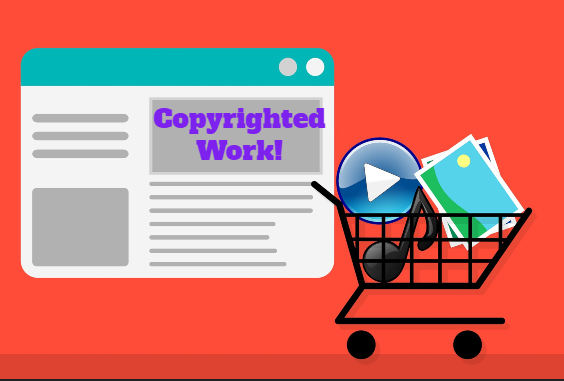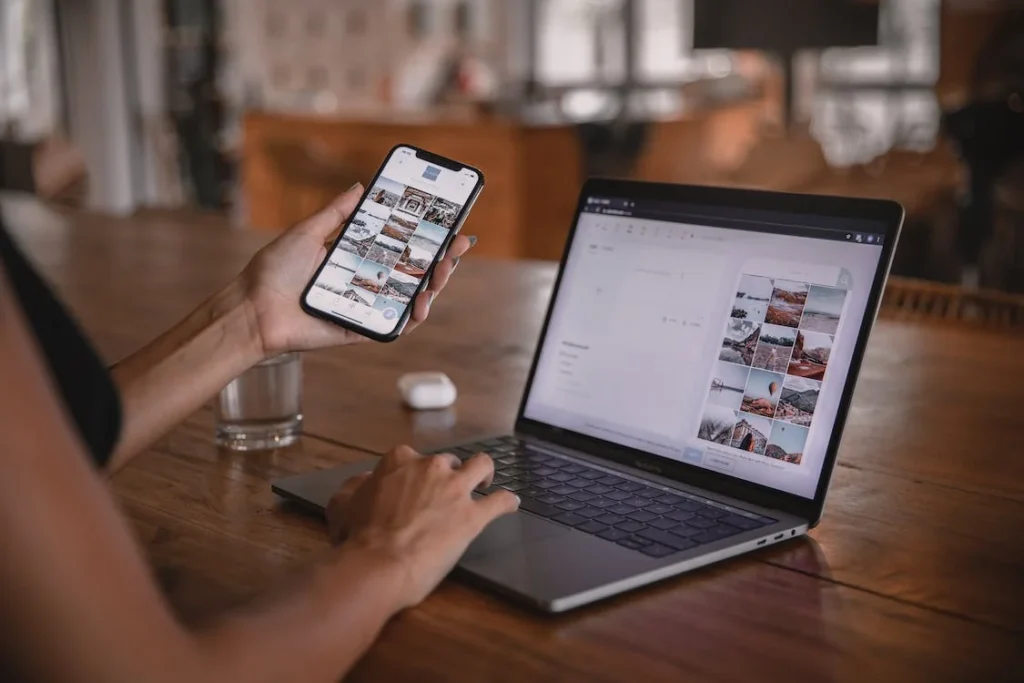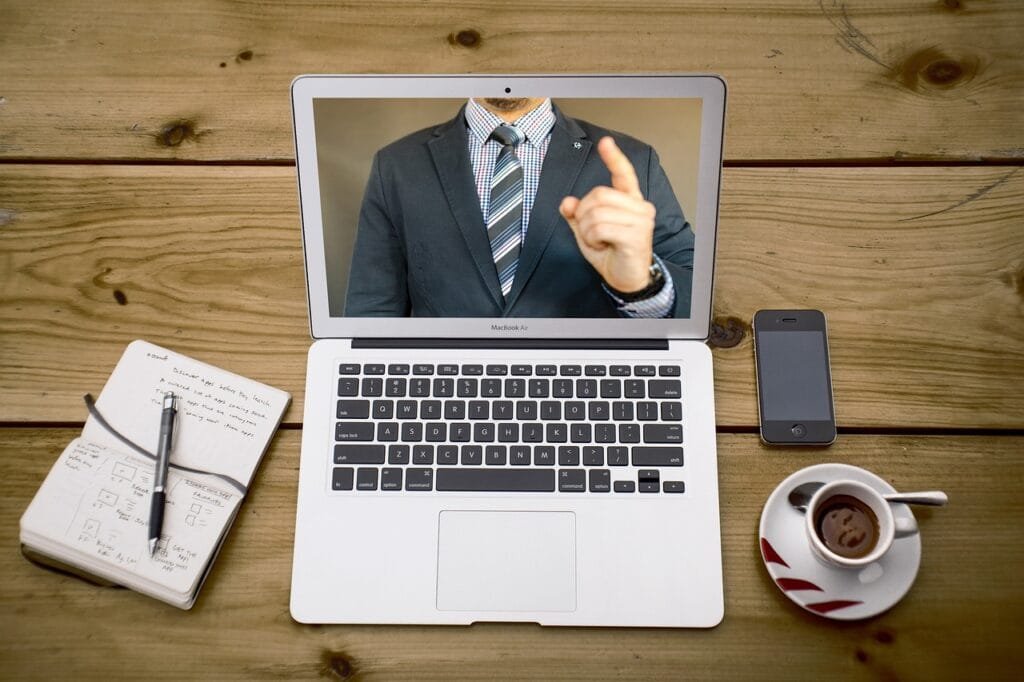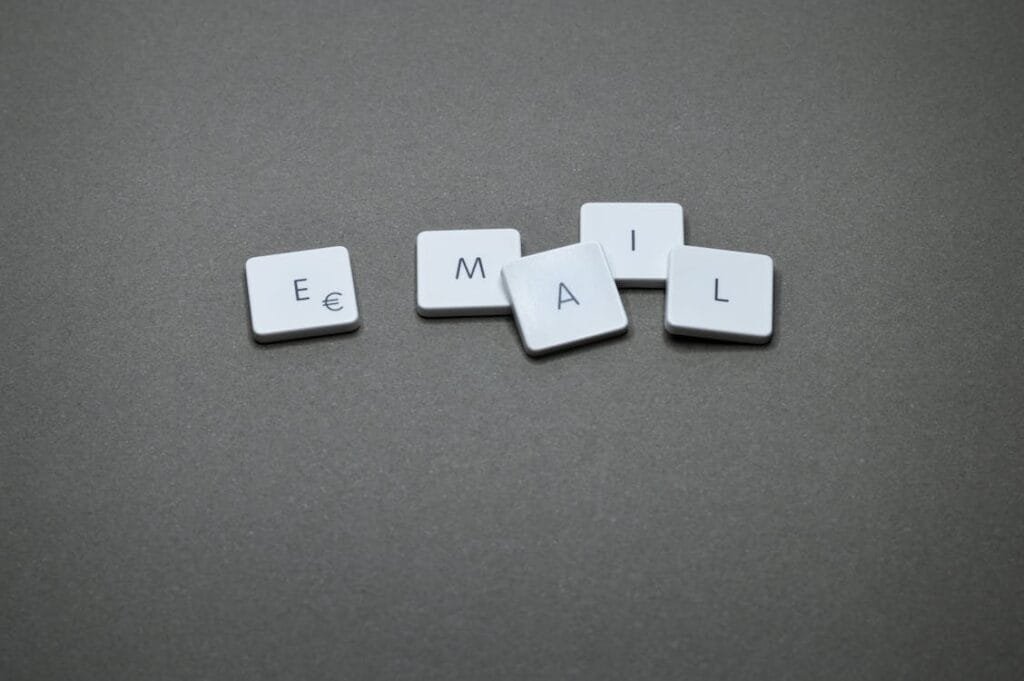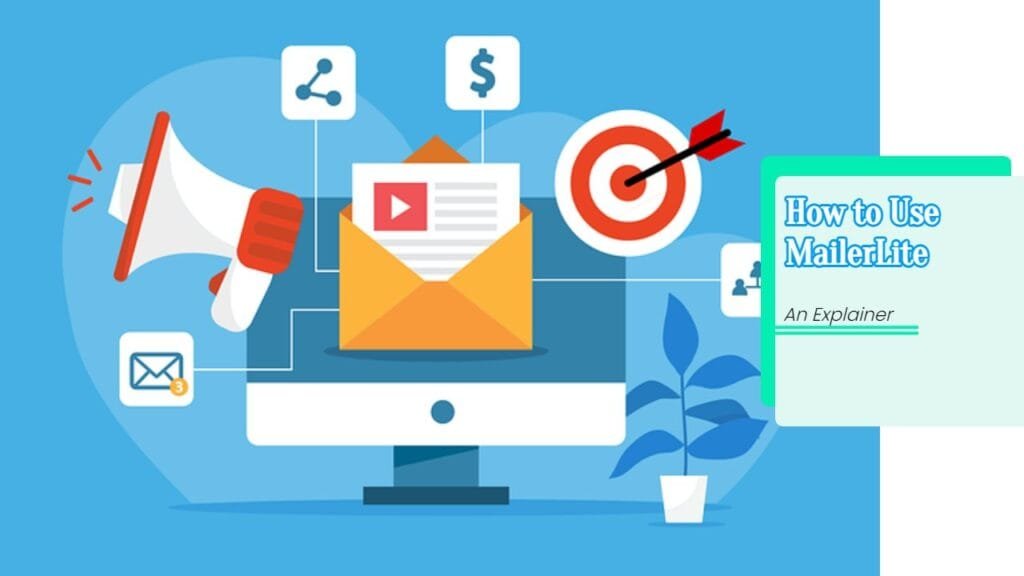Article by Pulkit Arora.
Knowing the basics of Copyright law is imperative if you don’t want your business property to be stolen or made public. It also helps prevent you from unknowingly trespass on any other person or business’ copyright which can lead to disastrous consequences for both you and your business.
This Article deals with the principles of copyright law and practice and describes the different types of rights that copyright and related rights protect. It also briefly includes the copyright transfer and enforcement clauses. Copyright is an Intellectual Property Rights component and an exclusive legal right granted to the author upon the creation of a literary or musical or cinematographic work.
Infringement of copyright almost inevitably leads to legal consequence.
Here, an attempt is made to protect business from violation of copyright by applying different sections and case-laws of the Indian Copyright Act. This article is aimed at not only helping you get a brief understanding over copyright law, but help you become adept enough to know the legalities behind the copyright so as to prevent any untoward incidence.
What is Copyright Law?
Copyright is a legal right granted to the creator or a group of persons to shield their work and to prevent other people from reproducing, adapting, translating, disseminating and performing the work in public without prior authorization from the person responsible for the creation of the work. However, for copyright to be granted, the work has to be original.
A work is considered original if it results from an intellectual effort by the author. It is distinct from patents (the subject matter of which is inventions), trademarks (which involve representations of the prestige and goodwill of an undertaking) and trade secrets (information whose meaning emanate from being kept conceal).
According to Nimmer, these rights allow the author to regulate and obtain payment in a variety of ways for the commercial usage of his work. Copyright law also provides “moral rights” which protect the reputation and dignity of an author.
Copyright Protects Copyright Owners from Unauthorised Infringement

Copyright matters cover an enormous variety of work – whether published or unpublished. As per Indian Copyright Act, 1957, Section 13 of Chapter III, the protection is provided to the following works-
- All kinds literary work (including novels, short stories, biographies, articles, news stories, poems, outlines, letters, email messages, pictorial, graphic and sculptural works including sketches, paintings, photographs, drawings, designs, etc.).
- Musical, dramatic and choreographed works (songs, telephone ring tones, plays, TV shows) sounds recordings (performances of songs, public speeches, books on tape).
- Computer programs, most websites, and various other digitized works.
In Blackwood vs Parasuraman cited as AIR 1959 Mad 410, Madras High Court observed that: “translation of literary work is itself a literary work and eligible to the protection of copyright; copying of the translation without the permission or license of the copyright owner in the original would lead to infringement.”
Copyright Originality
“Originality” is a statutory requirement because it is a minimum copyright requirement, not equivalent to a patent’s “non-obviousness” norm.
An insignificant work may be original enough to retain copyright, as long as it is not copied from an earlier work. The artist work is shielded even if there is dearth of artistic quality, as is expressly provided in Section 2(c)(i) of the Copyright Act, 1957 and the work is set on some form of material.
For example, fixation involves a work being written on paper, placed on a CD, painted on canvas.
Therefore, Choreographic works or original speeches or musical performances not noted or recorded are not shielded. The concept of fixation usually excludes temporary reproductions such as those momentarily projected on a wall, displayed electronically on a TV or similar unit or recorded momentarily in a computer’s memory.
Which Rights are Protected by Copyright?
Copyright provide enormous right. In accordance with The Copyright Act, 1957, Section 14 of Chapter III and Section 57 of Chapter XI, the author has been granted certain exclusive and peculiar rights; these rights can be divided into three groups and are as follows;
1. Economic Rights
It secures the personal interests of the author or proprietor to the event of commercial gain. Economic rights grant the copyright owner or holder, the exclusive right to allow or forbid such uses of a work. This is provided in Section 14 of The Copyright Act, 1957. It means that nobody can exercise such rights without express authorization of a copyright owner.
The nature of these rights, and their restrictions and exceptions, differ depending on the form of work involved and the related national copyright legislation. Economic rights are more than just a “right to copy;” focus is not simply on this right but on many separate rights to keep anyone from taking undue advantage of the original copyright owner’s artistic work.
According to international conventions, usually every national copyright statute provides exclusive rights to copyright holder: For example, copying a DVD, photocopying a book, installing a computer program, digitizing a photo and saving it on a hard disk, scanning a letter, printing a cartoon character on a t-shirt or integrating a portion of a song into a new album, for instance. It is one of the most significant copyright rights that are provided.
In the case of an artistic creation, it provides exclusive rights to the creator which includes the right to replicate the work in any material form including three-dimensional representation into two-dimensional works and vice-versa or to distribute or give copies of the work to the public, to include the work in any cinematographic production, and to make any adaptation of the production.
According to StimRich’s article “Copyright Ownership: Who Owns What”, in the case of a cinematographic film, the creator has the right to make a copy of the film, including a snapshot of any picture that is part of it, to sell or hire or offer to sell or hire, any copy of the film, and to distribute the film to the general public.
Right of Resale or Droid De Suite
It is available only in a few countries and is commonly limited to some work forms (e.g., paintings, sketches, prints, collages, sculptures, engravings, tapestries, ceramics, glassware, original manuscripts, etc). Resale rights grant creators the right to earn a share of the income on the resale of work.
Such a share typically varies from 2% to 5% of the overall sale price. If he was the first owner of the copyright, the author of a painting, sculpture, drawing or manuscript of a literary, dramatic or musical work shall have the right to share in the resale price of that original copy, given that the resale price exceeds ten thousand rupees.
The copyright transfer, in whole or in part, may be enforced either by assignment or licensing. Licenses and assignment are the substantive equivalent of ‘Lease ’and ‘Sale’ for the transfer of tangible property.
As provided in Joseph Richard Falcon’s Managing intellectual Property Rights: The Cost of Innovation, Vol. 6, apart from other rights, both actions include economic rights of the authors/ owners.
2. Moral Rights
These are based on the tradition of the French droid d’auteur which sees intellectual creations as a manifestation of the creator’s spirit or soul. France was not only creator of word droit d’auteur’ or ‘moral rights’ vested In copyright but also of a copyright term extended to 50 years after the death of the authors/owners.
Indian law recognized moral right as an inalienable right under the author’s special right. In the landmark case of Smt.Manu Bhandari vs Kala Vikash Pictures Ltd, it was held that in respect of Section 57 of the Copyright Act 1957 it is a special law for the defence of the moral rights of the author. The purpose of this legislation is to put copyright on a higher footing than usual legal matters, the language of Section 57 is of the greatest significance, and cannot be limited to literary expressions solely. It also covered audio and visual manifestation under it.
Moral right include providing to author the right to paternity (which means the right to claim authorship of the work) and right of integrity (which means the right to prevent the work from being distorted).
1. The Right of Paternity
The right to be identified as the author of the work (“right of creator “paternity right”). When an author’s work is copied, written, made available to the public or displayed in public, the person responsible for doing so must ensure that the author’s name appears on or in relation to the work, whenever it is appropriate. This right prevents others from claimingauthorship of his work.
2. Right of Integrity
The right to safeguard the integrity of the work. This gives the author the right to object to any alteration, mutilation or other modification of the work if such action is or would be harmful to the author’s honor or reputation and the author can claim damages if someone manipulates or mutilates his/her work.
Recognition of the author and the owner of the work are central to copyright. It is therefore of utmost importance to record and identify the creator, the time and place of production of the work, the essence of the artistic work and the circumstances in which it is made. Based on those conditions, the work qualifies for copyright or neighbouring and related rights (also known as corporate copyrights in some texts).
The copyright law therefore includes clauses concerning ownership, the existence of the right, the length of the right and the scope of the monopoly. For example it is claimed that the copyright infringement lawsuit has been settled by an author and a government-owned publisher, the Vietnam investment review claimed. Nguyen Thi Thu Hue, an author of famous love stories, sued the Literature Publishing House, a government owned corporation for publishing 10 of her stories without her permission or paying for them.
In India, AmarNath Sehgal v. Union of India’s case is illustrative and leading in moral rights contention. In this case, the complainant Amar Nath Sehgal received an offer from the Government of India to construct a bronze mural for display in the Vigyan Bhawan to which he gave his consent to construct the same. The plaintiff made a mural sculpture and it was installed at the entrance of the Vigyan Bhawan.
In the year 1979, the mural was removed and placed in the store room belonging to the Union of India. This act of removal was done without the prior consent of the sculptor. As the result, plaintiff moved to court under section 57 of The Copyright Act, 1957.
Union of India resisted the suit by arguing that it to be the owner of the mural and it is entitled to consign the same at a room. It further argued that the Complainant had been paid the price for the job. Defence of limitation was also set up. It was observed that mural was pulled down in 1979 and the suit has been filed after span of 13 year which attracted the Limitation Act.
In reply, the plaintiff argued that since the suit was one for the breach of his moral rights which is for lifetime, the suit could not be said to be prohibited by limitation. Unlike other types of IPR, copyright subsists as soon as the work is developed and set in a physical medium and when the idea bring into creative existence from that day other right begin. Unlike economic rights, moral rights cannot be transferred to another because they are personal to the creator (but they can be passed on to the heirs of the creator). Even if the economic rights in a job are sold to another person, the moral rights in the work remain with the creator.
3. Statutory Right
Copyright law gives the original author an exclusive legal or statutory right to create a work. It imposes a ‘negative obligation’ on others which prohibits using or benefiting from the work without the author’s permission (as provided in Anjaneya Reddy and Lalitha Aswath, Understanding Copyright Laws: Infringement, Protection and Exceptions).
What are the Merits of Copyright over other Intellectual Property Rights?

This subject is crucial because, in certain situations, different kinds of rights will protect a creation.
For example, Software is protected by copyright, but may also benefit from patent protection, provided in particular that the software application has a technical impact.
The same applies to labels, logos or product packaging that legible for copyright protection but it may also benefit from trade mark protection if other requirements are met. One major benefit in securing copyright is that it is automatic.
Therefore no expenditure is required to acquire or sustain it. In addition, due to the influence of numerous international treaties, such as the Berne Convention, ratified by one hundred and sixty four nations, copyright protection extends to a large part of the world. In addition, either patents or trademarks need an application to be made with the qualified national or international registration organizations.
These filings, which are normally conducted by patent or trademark agents, can be very expensive if rights are sought in other countries.
Precautionary Measures to Protect Copyright of Work
Firstly, it is important to arrange the date of creation of works for evidence. Indeed, if appropriate, this will allow you to object to a later development that would seem to be based on your earlier work.
This proof can be obtained, for example, by filing notary copy of the work. In addition, copyright requires careful management of contracts with the legal entities like subcontractors, and natural persons at the root of the protected innovations (for more info, read B.L.Wadhera, Law Relating to Patent Trademarks Copyrights, Designs and Geographical Indications).
In particular, it is necessary to include terms providing for the allocation of IP rights in your contracts. It is important to distinguish multiple scenarios in this respect. The law includes more specific guidelines for works produced by workers or for the performance of a hire job, provided that the person who put the order is engaged in a non-cultural operation or advertisement.
The contract must also include adequate assurances, especially regarding the fact that the delegated or approved works does not infringe the rights of third parties.
Copyright License

The word ‘licence’ was derived from the Latin word ‘licentia’ meaning ‘freedom’ or ‘liberty’. The License does not pass title; it only provides the right to use the property of the licensor. A license is an authorization given to someone (individuals or businesses) to exercise one or more of your economic rights over a copyrighted work.
The benefit of this is that you remain the copyright owner while allowing others to copy, distribute, print, broadcast, webcast, podcast or conduct derivative works in return for payment. Licensing agreements can be customized to suit the particular conditions of the parties. Therefore, you can authorize those rights and not others.
For example, you can maintain the rights to create derivative works from it while licensing the right to copy and use a computer game (e.g., a film).
Section 30 of the Copyright Act, 1957 authorizes the copyright owner to grant an interest in written to any other person to use his property. The contract sets out which rights were granted and for what time.
In the case ofDeshmukhand Co. (Publishers) Pvt. Ltd. v. Avinash Vishnu Khandeka,the Bombay high court provided a description of what a license actually is. The Court held that “Copyright consists of scheduled rights that can be exercised irrespective of each other. The license is a personal right not transferable except under some cases.
License is a right to do some affirmative act. License is a legal right which requires more than moral responsibility between a licensor and the licensee. The license is usually revocable at the grantor’s will.”
There are different forms of licenses.
A License can be exclusive or non-exclusive. Exclusive license implies a license granted by the licensor on licensee and the individuals approved by the licensee to exempt any other person (including the copyright owner) from the copyrighted work. In the context of a non-exclusive license, the copyright owner reserves the right to give or exercise licenses to more than one person. License is a personal right and the owner may not always have the right to make alternations to the conditions.
- Related Post: All About Professional Tax in India
Registration of Copyright
India adheres to the concepts of ‘automatic’ registration because it is a party to the Berne Convention. So there is no need to obtain any permission or any registration from the any government office. However, if you want, you may register your copyrighted work.
There is a fixed process for registering a work under the 1958 Copyright Rules which has been revised accordingly from time to time, and registration is issued for both published and unpublished work.
It can be obtained through official registration with any government office. When an concept has been converted to tangible form, for example by securing it in a fixed format (such as painting, sheet music, film, videotape, or computer file), the copyright holder has the right to enforce his or her exclusive rights, as provided in Article 5 of the Berne Convention.
Registration only act as a prima facie evidence of copyright ownership in the Court of Law. In the case of Asian Paints (I) Ltd. v. Jaikishan Paints & Allied Products, the High Court of Bombay had held that Registration is voluntary and not compulsory under the Copyright Act. A person doesn’t need to sign up to claim a copyright. Registration under the Copyright Act merely creates a prima facie presumption about the information that is entered in the Copyright Register.
You can hire a lawyer or hire the WinSavvy team for registering your copyright. If you want to hire a lawyer, you need to execute a power of attorney. Learn more as to how to create a power of attorney.
If you want to the WinSavvy team to register a copyright for you, contact adhip(at)winsavvy(dot)com.
Infringement of Copyright
To prove a case of infringement of the copyright, the owner must prove that –
- He owns a valid copyright
- The defendant shall exercise one or more special rights of the proprietor to reproduce, distribute, publicly perform, publicly show or alter the copyrighted work.
Section 51 of The Copyright Act of 1957 clarifies that when any person does any of the following acts, copyright in a work is considered to be infringed-
i. Allows for sale or hire, or sells or lets for hire or by trade shows or sales or hire deals, or
ii. Distributes for the purposes of commerce or to the degree that the proprietor of the copyright is adversely affected, or
iii. By way of trade manifest in public or
iv. Import into India any beach copies of the work.
In the case of R.G. Anand v. Delux Films the Supreme Court of India held that “Breach of a copyright is an infringement of a personal domain owned and held by the copyright owner and thus protected by law and breach of copyright in the sense that doing anything in that domain by the person without the permission of the owner of the copyright.
Remedies for infringement of Copyright
1. Civil Remedies
Unless otherwise provided by this Act, the copyright owner shall be entitled to all other damages by means of any of the above means, as provided for by statute for infringement of a copyright. Sections 54 to 62 deal with the provisions of civil remedies against copyright infringement. Such types of remedies are preventive in nature.
They forbid the perpetrator to do anything with work over which others possess copyright. Such remedies often allow for the owner’s punitive interests over the violation or copyrights being infringed. It covers Damages, Benefit Accounts and Infringing Copies Distribution. Such kinds of measures are curative in nature and help the claimant to save him/herself from any kind of monetary/economic damage that might result from the infringement.
2. Criminal remedies
Where a person deliberately infringes (a) the copyright of a work or (b) any other rights granted by the Copyright Act (i.e. broadcasting, copying, special rights), then he can be liable to criminal proceedings. The provision of the criminal remedy is covered under section 63 to 70 in The Copyright Act, 1957. It provides for punishment for infringement of copyright may call for imprisonment extending to 3 years and fine which may extend from Rupees fifty thousand to two lakh.
3. Administrative Remedies
This is known as quasi-judicial remedy provide under copyright act. The copyright owner may prohibit these copies from being imported into the Indian Territory that would violate the copyright of a work created in India.
Enforcement of Copyright
India’s Copyright Act provides right-holders with dual legal means to protect their rights. Copyright is enforced by –
- the Board of Copyright, and
- the Courts.
The Act has constituted a quasi-judicial body called the Copyright Board, which is assigned with the task of adjudicating disputes relating to copyright registration, copyright transfer, licensing of works withheld from the public, unpublished Indian works, creating and publishing translations and works for other specific purposes. It is quasi-judicial body constituted by the Central Government.
The Chairman’s terms and conditions of service was set out in Rule 3 of the Copyright Rules, 1958. In addition, the Board is vested with the powers of a Civil Court and its trials are considered to be judicial trials. The board also entertains appellant jurisdiction under section 72(1) of the Copyright Act, 1957. The decisions of the Copyright Board can be challenged in the High Courts of the respective states, as is provided in Section 72(2) of the Copyright Act, 1957. However, the challenge has to be done within three months of the announcement of the decision by the Copyright Board.
Alternative Remedy for Infringement of Copyright

To settle disputes of infringement of work outside the court – for certain cases, arbitration or mediation is an efficient method of dealing with the violation.
In general, arbitration has the benefits of being a less formal, quicker and cheaper process than court trials and an arbitral award is easier to implement internationally. The benefit of both arbitration and mediation is that the parties maintain power over the mechanism of dispute resolution.
This will also help to establish good commercial ties with another company in which your company can wish to continue collaboration or enter into a new licensing or cross-licensing agreement in the future. Incorporating mediation and/or arbitration provisions into license agreements is usually good practice.
Conclusion
I believe that registration of copyright acts as a small investment in protecting the work of your company which can bring substantial benefits, both by helping to avoid the infringement and by helping your company prove that you hold the copyright to the work prima-facie. It is affordable to register your business work and, if done properly, grants you substantial rights making it easier and more lucrative to enforce against possible infringements.
If you do not register your copyrights, you may lose precious time making your case against violators which make the value of your work lower, or it may also be more difficult to prove that you had copyright over the product in the first place.
It can be a big business mistake if you are operating a startup.
During / before procurement / subscription of any services, an appropriate degree of awareness of copy-right problems needs to be conceived.
Read Next:
- How to Appoint Directors for Indian Companies
- How You Can Register Patents in India: The Definitive Guide
That’s all. I hope you liked this piece. If you did like it, feel free to give it a share and if you have any questions, drop it down in the comments and I will get back to you!
Author Bio – Pulkit Arora is pursuing B.A LLB (Hons.) from Institute of Law, Nirma University. Connect with him on LinkedIn.

